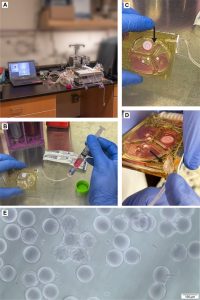What are stem cells
Stem cells are “master cells” that have the ability to become various kinds of specialized cells in the body to replace cells in organs or tissues that are damaged or going through apoptosis.
The process of healing and restoring the damaged organs and tissues in the body are very complicated, including numerous mechanisms, but the end result is regenerating these damaged organs. And stem cells are the preserving forces, called to the wounded sites to help the repairing process. Therefore, stem cells treatment is a way to provide a young, vigor cell source, which has the ability to differentiate, create new cell types to replace the damaged, dysfunctional ones.
Classification
Stem cells can be isolated from various sources such as the embryo, fetus, amniotic fluid, umbilical cord, placenta and different types of human tissues. Based on the source of stem cells, scientists nowadays divided stem cells into these categories:
- Embryonic stem cells: are pluripotent stem cells derived from the inner cell mass of a blastocyst, an early-stage embryo. These are undifferentiated cells, and able to develop into almost any cell types of the body.
- Foetal stem cells: are stem cells isolated from fetus after abortion. These are stem cells that can differentiate into almost any kind of cells in the body.
- Infant stem cells: are stem cells that are isolated from umbilical cord, placenta,…
- Adult stem cells: are undifferentiated stem cells, found in adult tissues such as: bone marrow, peripheral blood, brain, skin, …
- Embryonic-like stem cells or Induced pluripotent stem cells: are stem cells created by inducing adult somatic cells so that they can express embryonic stem cells’ characteristics.
Among the sources above, the isolations of stem cells from embryo, aminiotic fluid, and fetus, even the aborted ones, have been raising ethical questions all around the world and many countries do not allow these techniques to be carried on.
On the other hand, the isolations of stem cells from adult such as from bone marrow, peripheral blood, hair follicles,… are difficult and the quality as well as quantity of stem cells from these sources are also limited.
Why do we have to store stem cells
Nobody knows from the time when the baby is born until he/she grows up and so on, what kinds of disease he/she can get. Scientists have proven that stem cells can be obtained from many different sources, but newborn umbilical cord is one of the most ideal source of stem cells, capable of supplying young, rich, diverse, low immunogenicity stem cells. These stem cells can be used to treat many dangerous diseases and disabilities for the baby and even his/her family members who have compatible biological index.
Long-term storage of stem cells can be seen as a “biological insurance” for your baby and your family for future use.
Preserving umbilical cord stem cells when your baby is born is a once – in – a – lifetime opportunity. It can change or even safe a life when needed.








